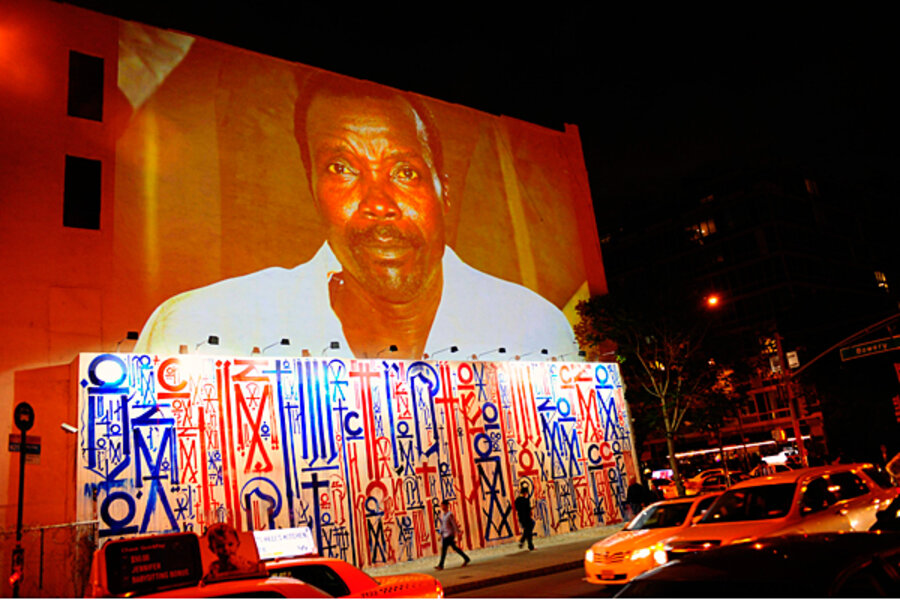#Kony2012: The viral video a year after the headlines
Loading...
On Mar. 5, 2012, the American nonprofit Invisible Children released a 30-minute video introducing an advocacy campaign called Kony2012, which pushed for the capture of central African warlord Joseph Kony.
What followed needs little introduction: Within a day, the video, with its slick production and magnetic emotional appeal, had 1 million views. A week later, it was closing in on 100 million. A warlord who had recruited tens of thousands of child soldiers and terrorized vast swaths of central Africa for nearly three decades was suddenly a household name in the United States.
But the criticism came nearly just as fast. The video simplified or outright lied about Kony and his current threat to the region, critics charged, and its calls for American intervention in the region were clunky, offensive, and neocolonialist. And the organization behind the video, Invisible Children, came under broader scrutiny for the low percentage of funds it devoted to on-the-ground peace-building work.
Ten days after the video went live, its lead creator, Invisible Children founder Jason Russell, suffered a bizarre mental breakdown, captured on camera, in which he ran naked and screaming along a San Diego street, vandalizing several cars. And a month later, the group’s “Cover the Night” campaign to blitz public spaces with images of Kony’s face was a high-profile flop. More marches and videos followed, but none matched the hype of the original documentary.
Now, a year after the original blitz of Kony2012 coverage, the legacy of the campaign is beginning to settle – and it is far more mixed than either its supporters or critics often acknowledge.
For its part, Invisible Children counts a number of successes. In a triumphant new video and website unveiled Tuesday, the organization reports that killings of civilians by the Lord’s Resistance Army, Kony’s militia, are down sharply in the last year, and that two of its leading commanders have been captured or killed.
And whether or not Invisible Children can take credit for those facts, it has scored one undisputable campaign victory: In January, on the heels of a wave of Kony2012-related organizing, Congress passed the Rewards for Justice Bill, authorizing a reward of up to $5 million for information that could lead to the arrests of Kony or other war criminals.
But legislation meant to propel Kony’s capture also speaks to the campaign’s biggest failure: Invisible Children’s deadline for capturing the warlord – the end of 2012 – has passed, and Kony remains at large.
“When you put a deadline on something like this, it gives people a great sense of urgency,” says lawyer Ruha Devanesan, a fellow at Harvard University’s Berkman Center for Internet & Society who has studied Invisible Children's reaction to the Kony2012 fallout. “But if you move past your self-imposed deadline and haven’t achieved that goal, it’s really problematic for the messaging.”
If Invisible Children wants to rebuild momentum around its cause in 2013, she says, it will have to rebrand. But that is something the organization has already proven itself highly capable of.
After all, she points out, this was an organization that – whether from a genuine change of heart or simple practicality – has reacted swiftly to many of the charges leveled against it in the past. Other Invisible Children videos that followed Kony2012, for instance, traveled far more deeply into the history and politics on the ground than the original.
“They’ve been forced to learn very quickly,” she says. “There’s been a huge growth spurt in learning [at Invisible Children] this past year.”
But for some of the organization's detractors, the flaws of the Kony2012 project are more fundamental. When the original video was released, Nigerian-American writer Teju Cole called it an example of the “white savior industrial complex” – the noxious mix of good intentions and limited understanding of global politics that he argues has fueled a great deal of American intervention in the developing world.
“I disagree with the approach taken by Invisible Children in particular, and by the White Savior Industrial Complex in general, because there is much more to doing good work than "making a difference,” he wrote after the release of the original video. “There is the principle of first do no harm. There is the idea that those who are being helped ought to be consulted over the matters that concern them.”








